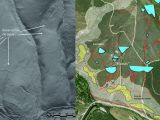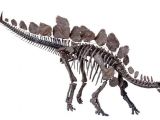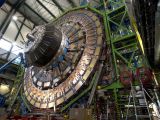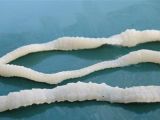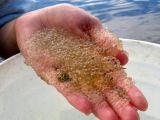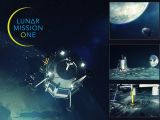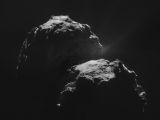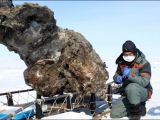It could be that this week was just like any other week for us ordinary folks, but scientists really kicked things up a notch these past few days.
All sorts of discoveries were announced and a heck lot of papers were published, and, once again, humanity is just a wee brighter.
In case your schedule proved rather hectic and you had trouble finding the time to keep an eye on what the scientific community was up to since last Sunday until now, here are the 10 best science news and announcements of the week.
10. 2,000-year-old goldmines discovered in Spain
This week, archeologists announced the discovery of a network of ancient goldmines in Spain. The mines date back to 2,000 years ago and were created by Romans. What’s interesting is that, to set up the mines and their accompanying infrastructure, the Romans drew inspiration from the ancient Egyptians.
Rather than go through the trouble of excavating the ground hoping to find something worth exploring and studying, researchers used LiDAR technology to document the existence of these 2,000-year-old mines in Spain’s Eria valley.
In case anyone was wondering, LiDAR technology boils down to using a laser system attached to an aircraft to scan the ground and pin down forms that would otherwise go unnoticed. This technology was develop by NASA back in the 1960s, and it first served to monitor sea ice in the Arctic.
9. Kisses found to transmit myriads of bacteria
Having carried out a series of experiments with the help of volunteers, researchers discovered that about 80 million bacteria are transferred from one individual to another during a 10-second kiss. Most of these bacteria are the kind that like to set up camp in human saliva.
On the bright side, it appears that there is no reason whatsoever to give up smooching forever after learning about this scientific kind. This is because we kissing enthusiasts have 700 different types of microorganisms living inside our mouth at any given time. Simply put, the bacteria transferred through kissing are just late arrivals to an already raging party.
The researchers who carried out this investigation say that, because as many as 80 million bacteria are transferred during just one decent kiss, couples more often than not end up having the same population of microorganisms in their mouth.
8. Dinosaur skeleton announced to go on display in London
Come December 4, a nearly complete dinosaur skeleton will go on display at the Natural History Museum in London, UK. The skeleton, estimated to be about 150 million years old, was unearthed in Wyoming, US, back in 2003, and is only missing a limb and part of the tail.
The archaeologists now busy getting the skeletal remains ready for their public debut say the fossilized bones belong to a Stegosaurus stenops. These beasts roamed the Earth about 155 million to 150 million years ago.
The skeleton set to go on display at the Natural History Museum in London less than two weeks from now measures 18.3 feet (5.6 meters) from head to tail and stands about 10 feet (roughly 3 meters) tall. It comes complete with four spikes that used to adorn the dinosaur’s tail and nearly two dozen back plates.
7. Scientists zoomed in on two new subatomic particles
This past Wednesday, scientists announced that, with the help of the Large Hadron Collider near Geneva, Switzerland, they managed to pin down two never-before-seen subatomic particles. The particles, now known as Xi b’ and Xi b*, each comprise three quarks.
As detailed by the brainiacs behind this discovery, quarks are even smaller particles that, according to data at hand, cannot be broken down any further. For this reason, they are referred to as fundamental particles.
Despite the fact that they are both made up of three quarks, Xi b’ and Xi b* have different masses. Scientists say that this is due to the fact that the arrangement of the three quarks that comprise each of them differs ever so slightly.
6. Tapeworm larva pulled from 50-year-old man’s brain
A fairly odd medical case report hit the public eye earlier this week and it caused quite a stir. The report in question tells the tale of a Chinese man who had a tapeworm larva live inside his brain for at least four years.
During the time that it lived inside the man’s brain, the parasite caused him to experience symptoms such as headaches, an altered sense of smell, memory impairment and seizures. The parasite was discovered with the help of an MRI machine. To remove it, doctors had to operate on the patient.
Once pulled from deep inside the 50-year-old’s head, the tapeworm larva was identified as a Spirometra erinaceieuropaei. Scientists say that, although this species of parasite is fairly rare, people can be exposed to it when drinking contaminated water or when eating undercooked frog or snake skin.
5. North American lakes said to be turning into jelly
According to a new research paper, lakes in North America run the risk of turning into jelly. What the scientists who authored this study mean is that, as a result of a drop in calcium levels, these bodies of water are likely to become home to a whole lot of jelly-like creatures.
These creatures are named Holopedium. They are water fleas whose bodies look like they are cloaked in a layer of jelly. Unlike other aquatic dwellers, they have no trouble surviving in nutrient-poor environments. Hence, the more calcium levels drop, the more likely to become a dominant species these fleas are.
Evidence at hand indicates that the loss of calcium that threatens to turn North American lakes into jelly is due to acid rains and timber harvesting in the area. Otherwise put, it’s we humans who need be blamed for this peculiar phenomenon.
4. Space enthusiasts announced plans to drill into the moon
Come 2024, UK-based Lunar Missions Ltd. wants to send a robot to the moon and have it drill into its surface. The space enthusiasts behind this ambitious project hope that their robot will manage to reach a depth of 65 feet (20 meters), maybe even 330 feet (100 meters).
Lunar Missions Ltd. explains that the goal of this mission is to dig deep enough inside the moon’s south pole to retrieve rock samples that have never been exposed to cosmic radiation or meteorites. By studying the rocks, scientists could gain a better understanding of how our planet and its satellite came into being.
Apart from obtaining these samples, the robot will be entrusted with placing a time capsule inside the moon. The time capsule will be laid to rest in the borehole created by the robot when busy drilling for unspoiled lunar rocks, and will carry messages recorded by ordinary folks here on Earth.
3. Compound in soap accused of causing liver cancer
This week, researchers announced that, after carrying out a series of experiments on laboratory mice, they found that a compound that is commonly added to soap, shampoo and toothpaste can cause liver fibrosis and even cancer.
The compound in question is known to the scientific community as triclosan. The reason why it is often added to soap, shampoo, toothpaste and other similar products is because it has antimicrobial properties. However, it appears that long-term exposure to this compound can cause serious health trouble.
What’s interesting is that this study isn’t the first to point the finger at triclosan and accuse it of being a threat to public health. Thus, the US Food and Drug Administration is currently investigating whether or not the compound can affect proper muscle contraction and hormonal balance.
2. Philae found organic molecules on Comet 67P/C-G
As you probably know by now, the European Space Agency’s Philae probe landed on Comet 67P/Churyumov-Gerasimenko this past November 12. Recent news on the topic says that, just before being forced to enter hibernation mode, the spacecraft found organic molecules on the comet.
For the time being, scientists cannot say for sure exactly what organic molecules the lander documented on its target comet. Seeing how all molecules that have carbon included in their structure count as organic, there is little doubt that they have plenty of culprits to pick and choose from.
The reason why the news about this discovery took the world by storm is because carbon-based organic molecules can, under certain circumstances, get together and birth amino acids, which count themselves among the building blocks of life. Hence, the discovery of organic molecules on 67P/C-G could mean that life was brought to our planet by comets.
1. Progress made in cloning a mammoth
The absolute coolest news of the week is the one concerning ongoing efforts to clone a mammoth. That’s right, it appears that a bunch of scientists are now hard at work trying to bring these long lost creatures back to life. Should they succeed, the achievement will undoubtedly make history.
The scientists behind this project expect the corpse of a mammoth that lived and died in Siberia about 40,000 years ago will help them resurrect this species. This is because, unlike other mammoth carcasses unearthed over the years, this one is very well preserved.
Thus, when it was discovered back in May 2013, the corpse was mind-bogglingly fresh. What’s more, blood was found in ice cavities hidden beneath it. With the help of this carcass, scientists have so far managed to recover several fragments of mammoth DNA.
Admittedly, they are still a long way from recovering undamaged DNA from the corpse. Still, they say that even the fragments that they have until now obtained could help them understand the genetic makeup of these animals well enough to create a clone.
Well, there you have them. The week’s 10 most important news and announcements from the world of science. If you’re interested in keeping up to date with what brainiacs are up to these days, don’t forget to check this page again a week from now. You’ll find another round-up waiting for you, as per usual.
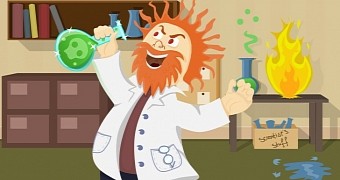
 14 DAY TRIAL //
14 DAY TRIAL // 
